

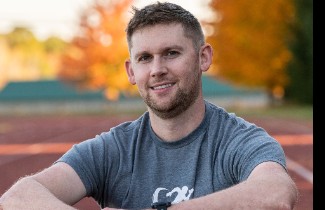
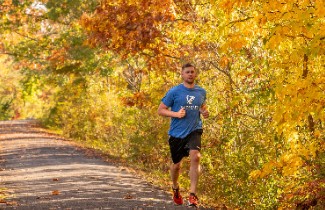
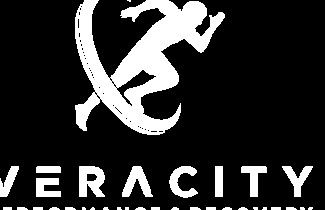
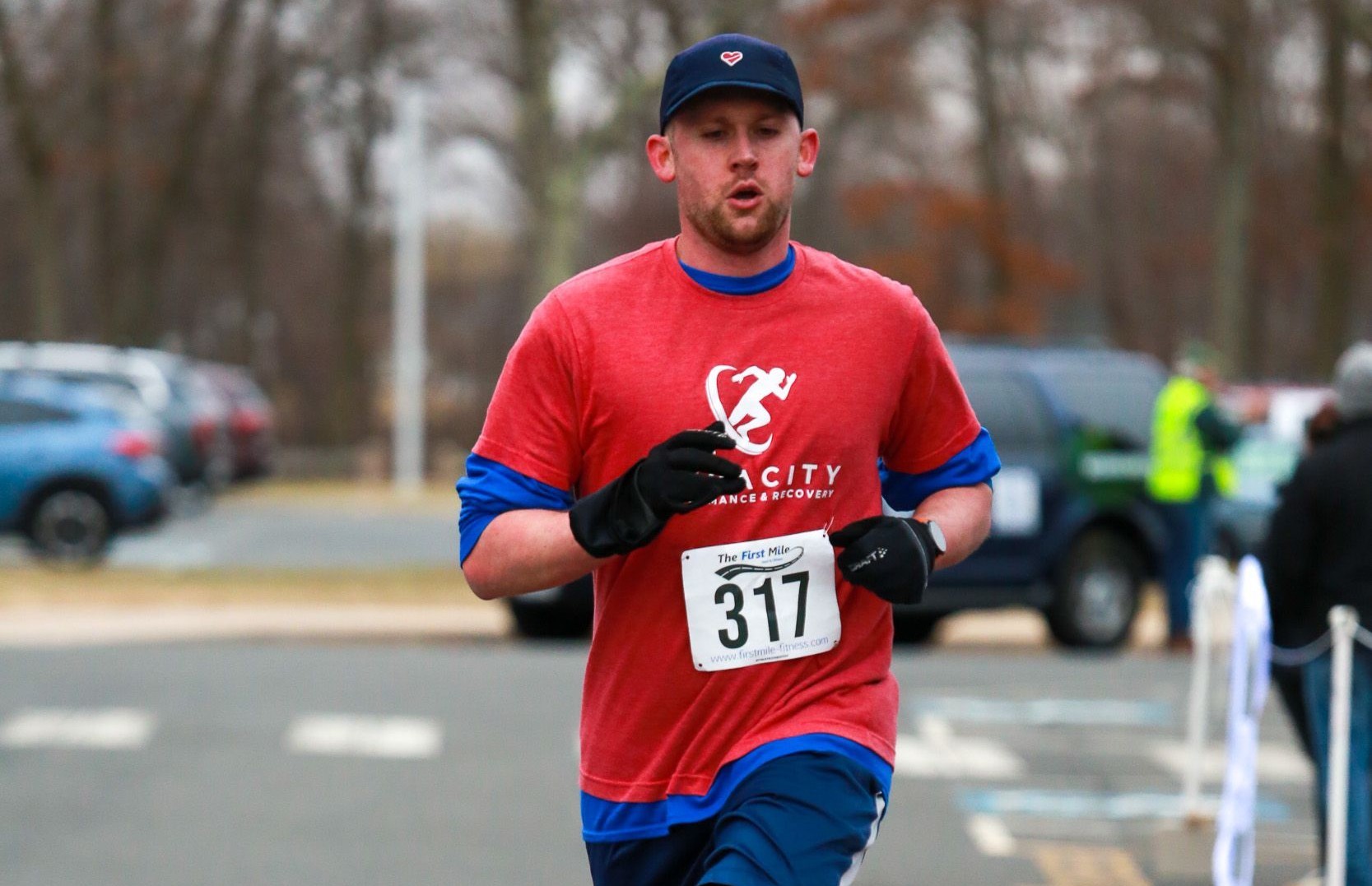
Hey, I'm Chris. Runner, physical therapist and endurance coach.
The vast majority of runners will get hurt every year. It can be frustrating to try and live a healthy, fulfilling life only to experience recurrent injury resulting in unnecessary confusion and lost time. Injuries are complex, especially when pairing with an athlete's unique environment and the distinct performance demands of running. It can be difficult to navigate the waters while keeping active.
Overrun clinics and Google searches are the norm. I believe most rehab provides a disservice. Often, this is masked by the latest gadget, techniques or terminology. With injuries prevalent, it’s clear this is not good enough.
You have likely already attempted to resolve your issue to unsatisfactory results. My goal is to provide insight into a runners unique situation with actionable advice for long-term health and performance. Why? Because I have been there. If you are an injured, looking to run injury free, or run further and faster then let’s talk.
Every athlete wants to optimize recovery to perform or move better. Dry needling and manual therapy are useful adjuncts to treatment or recovery.
Dry Needling involves a thin monofilament needle to be inserted into a tissue to induce local healing or "reset" the healing process. We ar...
The benefits of running have been well documented, yet most runners get injured yearly. Most running injuries can be reduced to training errors. My goal is to provide endurance athletes with unrivaled endurance coaching through consistent communication and applying the latest research techniques. Wh...
VIEW MORE1:1 physical therapy specifically for runners or the active individual. If you are struggling through persistent aches or recurrent injury and staying active is important, let's talk.
SPORTS REHAB
RUNNING GAIT ANALYSIS
MANUAL THERAPY
SOFT TISSUE RELEASE
DRY...
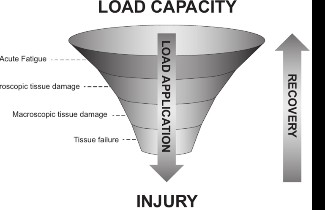
I love stuffed peppers, but I rarely have it. Trouble is, I don’...Read More
I love stuffed peppers, but I rarely have it. Trouble is, I don’t like cooking. Too many numbers, too many measurements, too much time. I’d rather have a shake, keep it simple. Running injuries are kind of like a recipe, but it’s a complex one whether you like it or not.
It seems everyone you talk to is dealing with some ache or pain. It also seems everyone is seeking a panacea for their chronic condition that keeps nagging them. This seems ironic with how “simple” running is perceived to be…. Unless it isn’t that simple...
“It’s just my tight hip flexors” ... “Oh, it was my weak calf muscles” ... "I just need to stretch more" ... It’s never just your “insert tight/weak body part”.
Why Do Injuries Happen?
Running is a repetitive sport where we see injuries occur over time. We may slightly exceed our tolerance to training and that’s okay, it happens. However, if this continues over time, a chronic, slight overload of the system beyond what we are looking for adaptation, coupled with insufficient recovery may lead to injury.
This often comes unnoticed due to cumulative stress. It happens when you wake up on a sunny July morning. It’s your day off after a stressful 50-hour work week, and the Saturday long run is what you look forward to. You get a whiff of that fresh coffee, so you jump out of bed and notice a slight “stiffness” in your Achilles. Meh. Running is where you de-stress and have time to yourself, so you do your typical 10-miler. Yet, the stiffness continues. When Google, Instagram, and YouTube fail and the advice from your uncle falls short, it’s time for a better understanding of your unique situation
Training involves applying loads (workouts) and promoting recovery, or adaptation. Unfortunately, training is not so black and white but rather a complex interaction of many factors. It’s important to recognize that stress is not differentiated in the body. In other words, our training and our ability to recover and adapt are not just physical but equally mental and emotional. There’s a reason why student athletes tend to get hurt more often during times of increased academic or life stress. Similarly, psychological factors such as anxiety, depression, and low mood status may predispose athletes to injury and impede recovery.
At the start of each workout or season, we have individual load tolerance. Our goal is to apply appropriate load to our system, allow adequate recovery, and see adaptation resulting in improved performance. Runners get hurt because the applied load (training) exceeds the capacity of the affected tissue. This can occur in a single training session or over time. Problems arise with insufficient recovery, as this is a complex mixture of physical, emotional, and mental components muddied by individual stress responses and personal history. Point is, it’s much more than your training program or your self-identified mechanical defect. It’s complex and appears impossible to quantify.
So How Do I Respect Psycho-Emotional Factors?
Treat emotional and mental experiences as you would physical. If you run a marathon, you’re going to (hopefully) dial things down the following few weeks. Given a time of mental exhaustion or emotional distress, scale back. This will inevitably happen
Athletes tend to speak on mechanical faults (tight hips, poor glute activation, etc) as they are tangible, or something we can see or feel. You don’t have to have a doctorate to see a great toe is stiff. Injuries and recovery are complex and complicated by an interrelationship of mechanical, emotional, and mental factors. Physical measurements are easy to observe, but we shouldn’t underestimate psycho-emotional factors.
This is the reason it’s difficult to answer a quick question at the dinner table. While you’d like to be a resource, you also don’t want to give what appears to be a clear answer with insufficient information regarding the athlete’s environment. It can be difficult to navigate, “hey, my calf is a little sore. What can I do?”, without greater context into their training habits, injury history, current medications, chronicity of the injury and overall lifestyle, etc. You want to be a resource…. You also don’t want to mislead someone without adequate information.
Runners often simply take time off before re-introducing training. This isn’t always such a bad idea and while training is significant, there are still other factors to consider. Recovery is complicated and takes time, we must look outside of our training and into our environment to best understand our injury and how to restore normal training. I think most individuals acknowledge the effect of stress and its effect on injuries, but don’t realize just how significant it is. Recognizing the complexity of injuries and better understanding these factors will inevitably lead to better understanding and reduction of injuries and assist in recovery. Running is complex. Recognize this, or you’ll ruin what could be a great recipe.
“….there is no single universally accepted definition of ‘stress’. The problem is not that the term has no clear meaning, but that it has different meanings in different contexts. This definitional ambiguity, in tandem with the complex neurobiology underpinning the stress phenomenon, ensures no single ‘gold standard’ measure of stress exists.” (Kiely, 2017)
“Accumulating multi-source stress variously down-regulates the immune system, motor coordination, cognition, mood, metabolism, and hormonal health; thereby dampening positive adaptation, diminishing athletic performance, elevating injury risk, and compromising recovery and recuperation.” (Kiely, 2017)
So, if injuries are so complex then what is the cause of my injury? In reality, the ingredients that factor into an injury look more like this…

0

0

0
you must login


Running injuries are common and often largely due to training load mis...Read More
Running injuries are common and often largely due to training load mismanagement over several weeks or months. Considering internal and external loads is vital while progressing appropriately.
Consistency is king 👑 when it comes to running. This allows us to adapt to ward off injury while also helping with performance. Consider using exertional minutes and the acute:chronic ratio discussed above.
Sources
Gabbett T. J. (2018). Debunking the myths about training load, injury and performance: Empirical evidence, hot topics and recommendations practitioners. British Journal of Sports Medicine, 54(1), 58-66.
https://doi.org/10.1136/bjsports-2018-099784
Gabbett. T. J. (2016). The training -injury prevention paradox: Should athletes be training smarterandbarder? British Journal of Sports Medicine, 50(5), 273-280
https://doi.org/10.1136/bjsports-2015-095788

0

0

0
you must login

As children, we run across our streets, roll down grassy hills, or cli...Read More
As children, we run across our streets, roll down grassy hills, or climb that tree in the front yard without fear or embarrassment. These activities are coupled with scent of spring grass, dizzying sensations, and if we’re so lucky fond memories long into the future. One unsuspecting day, this changes. You show potential and commit to a more serious training regiment, or you trickle off from a physical lifestyle and gravitate towards other less dynamic interests.
Those showing potential may be led to premature intense training to optimize their ability. Although at some point this may be required to reach athletic potential, it’s often done prematurely to the detriment of unsuspecting youth.
Sports specializing can be defined as intense, year-round training in a single sport to the exclusion of other sports. This definition may be debated as “intense” is varied, but it serves as a negative source during one’s formative years.
Here are the reasons why specialization is detrimental, and diversification will maximize one’s athletic career
Youth Specialization for Performance
Athletes tend to perform better when delaying specialization. This may be due to increased injury rates, burnout, or dropping out altogether for those specializing early.
A 2019 study found that the best young distance runners in the United States (U16 and 18) ran their PR before the age of 20. Athletes who were successful in their mid-teenage years through adulthood were “rare exceptions”.
A 2018 study looked at elite track athletes aged 12-14 years old’s in the United Kingdom between 2005 and 2015. Under 15% of these athletes, male and female, held their top-ranked status by the age of 20. Further, only 40% of these elite athletes held their ranking a few years later.
One may question, won’t my child be behind in their given sport if they don’t specialize? It appears developing a child’s movement experience by exposing them to a variety of sports increases their ability to pick up skills later in life. During a time of rapid growth, diversification of movement will optimize a child’s ability to understand movement going forward. It’s as if they are developing their foundation, and with these more specific skills are more accessible in later years. Youths who diversify their sports enhances their ability to obtain expertise later. This is particularly significant in distance runners, whose sport is one-dimensional compared to other unpredictable, varied sports.
Men and women tend to peak at the ages of 25-27 years old for middle-distance running, while marathoners peak around 28-29 years. Adolescents have plenty of time to maximize their athletic potential.
Youth Specialization for Health and Longevity
Adolescents with heavier workloads in their early teenage years tend to suffer more injury. Less time on the field equates to less training and impaired performance.
A 2014 study looked at the training profiles of Australian track runners. They found that greater training loads in early teenage years (13-14 years) correlated to injury. 17.3% of these athletes retired by 18 years due to injury. Persistent injury has been cited as one of the most common reasons for dropping out of sport altogether.
Those who specialize are at a higher risk for injury at a younger age, as well as in the future. For example, bone density declines during periods of rapid growth. During times of peak height velocity (Males: 13 years, Girls: 12 years), there is a delay in bone mineralization and overall bone strength which requires time to “catch up” to the rest of the body. This leaves a window of increased injury risk, particularly so with intense training.
Up to 80% of bone health can be attributed to genetics. That leaves roughly 20%, of which can make a significant difference. This is significant as distance running serves as a rather one-dimensional sport. Bones are best developed through multi-joint, high intensity, varied and dynamic movements (Ex. Soccer, Basketball, Weight- Lifting, etc). Placing unpredictable, intense loads onto the bone will optimize its structure for the future and serve as a potent source to reduce injuries. The time to do this is as children into our mid-late teenage years.
Youth Specialization for Happiness
Young athletes who specialize in a single sport have reported becoming consumed by training and feeling a sense of isolation. This can lead athletes to identify with their sport, whereas an eventual injury leads to a loss of identification crisis and send them into a tailspin. Pair this with an injured athlete no longer valued on a competitive team, it’s no wonder why chronic exposure to stressful situations often leads to anxiety and burnout.
This is far removed from the carefree days of children, only to be further influenced by well-intentioned coaches or parents encouraging premature intense training. Kids should enjoy practice rather than have it feel like a burden when fitting in with school and other life factors as they grow. The psychological aspect of training reflects in future success.
The majority of successful track athletes did not specialize until after 16, on average 17.7 years old. Growing bodies shouldn’t train like developed humans. Cause they aren’t developed humans and doing so may harm their growth. Your growing years may present an opportunity to optimize your human engine for many years to come. Use this time to upgrade to a larger, more efficient engine by exposing kids to diverse environments, which they will adapt to.
The most common path to health and success is going to be for those who diversify their sports and overall experiences at a young age. Not specializing until late adolescence. In doing so, this will be reflected in the decades to follow.
Thank you for taking the time to read, I hope you found this useful and thought-provoking. Questions or input on this blog? Shoot me a message!
Sources
Beck, B., & Drysdale, L. (2021). Risk factors, diagnosis and management of bone stress injuries in adolescent athletes: A narrative review. Sports, 9(4), 52. https://doi.org/10.3390/sports9040052
Enoksen, E. (2011). Drop-Out Rate and Drop-Out Reasons among Promising Norwegian Track and Field Athletes: A 25 Years Study. Scandinavian Sport Studies Forum, 2, 19-43.
Tenforde, A. S., & Fredericson, M. (2022). Bone stress injuries: Diagnosis, treatment, and prevention. Springer Publishing Company, LLC.
Jayanthi N, Pinkham C, Dugas L, Patrick B, Labella C. Sports specialization in young athletes: evidence-based recommendations. Sports Health. 2013 May;5(3):251-7. doi: 10.1177/1941738112464626. PMID: 24427397; PMCID: PMC3658407.

0

0

0
you must login
Hey, I'm Chris. Runner, physical therapist and endurance coach.
The vast majority of runners will get hurt every year. It can be frustrating to try and live a healthy, fulfilling life only to experience recurrent injury resulting in unnecessary confusion and lost time. Injuries are complex, especially when pairing with an athlete's unique environment and the distinct performance demands of running. It can be difficult to navigate the waters while keeping active.
Overrun clinics and Google searches are the norm. I believe most rehab provides a disservice. Often, this is masked by the latest gadget, techniques or terminology. With injuries prevalent, it’s clear this is not good enough.
You have likely already attempted to resolve your issue to unsatisfactory results. My goal is to provide insight into a runners unique situation with actionable advice for long-term health and performance. Why? Because I have been there. If you are an injured, looking to run injury free, or run further and faster then let’s talk.
Training Block was created with a mission to support and empower runners, in order to elevate our sport. We do so by giving runners access to a network of local sport performance providers, who provide runners with the care they need from coaching, physical therapy, massage, strength training, and more. We also give providers an easy way to connect with each other and share articles, videos, and other resources that benefit runners and providers alike. For every service booked through Training Block, we donate 10% of our revenues to Training Block’s Elite Athlete Fund, which sponsors elite runners who do not have professional contracts and need financial support for racing at their highest level.
Copyright © 2024 Training Block. All rights reserved.
Refer a friend and get $5 discount on order!